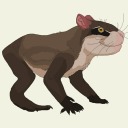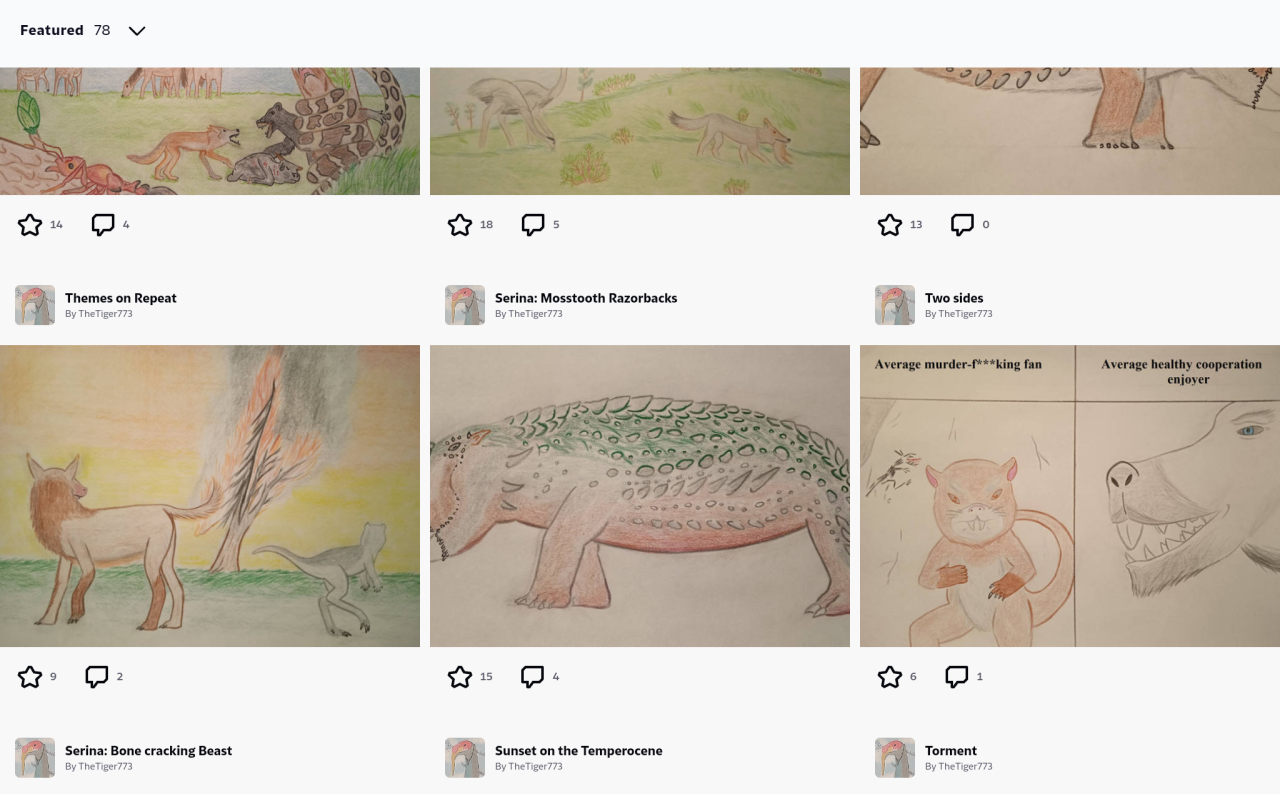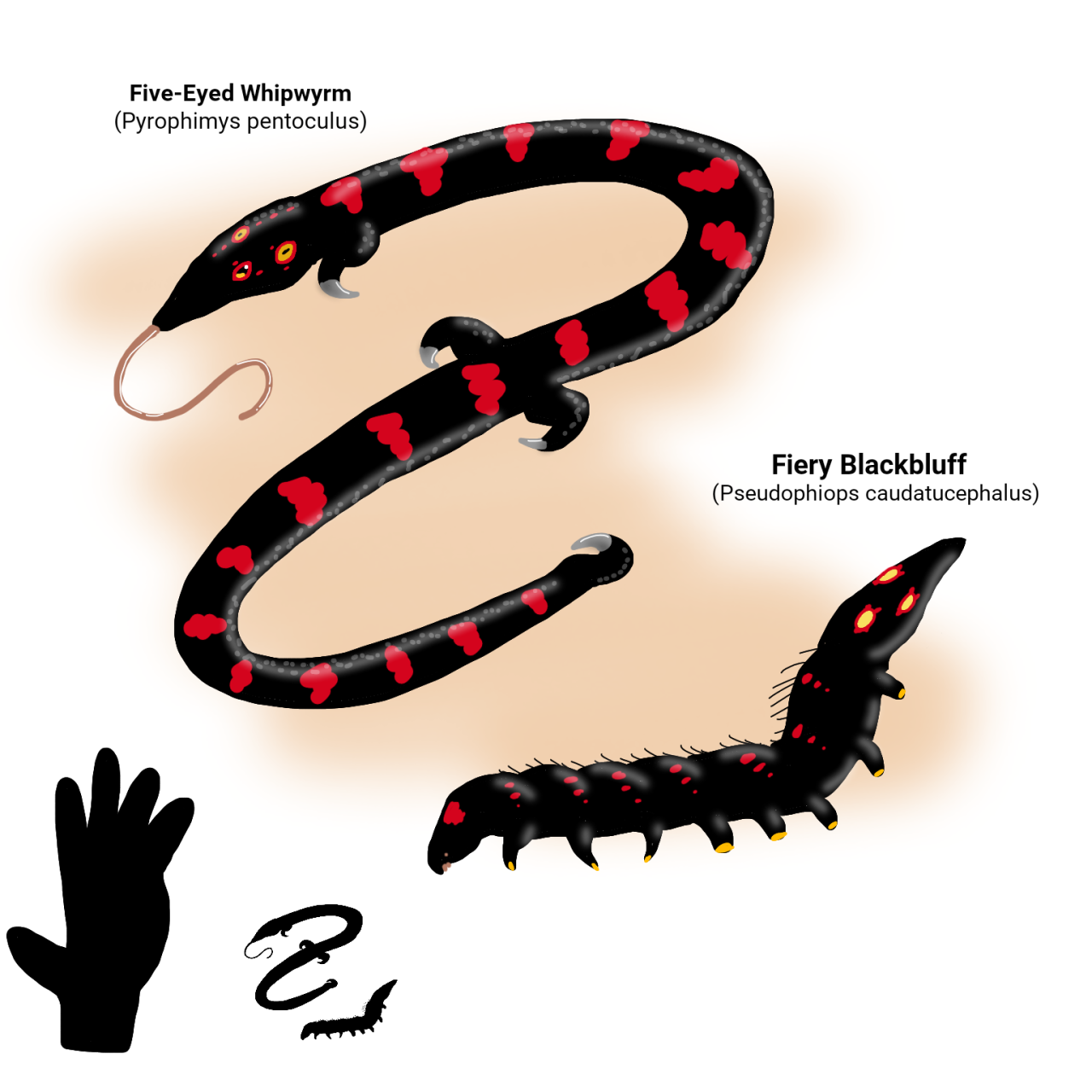Insects, just as on Earth, have become tremendously successful on HP-02017: overshadowed by the hamsters and their spectacular descendants, but nonetheless unimaginably numerous, diverse, and vital to the balance of the countless ecosystems and biomes that have flourished across the planet for millions of years, from cold polar tundras to temperate forests to scorching deserts and, in the Middle Temperocene, a time of flooded coasts and expanding oceans thriving with life in its sunlit shallows, even the seas itself.
Many dipteran flies and a few hymenopterans too have taken up partial residence in coastal areas, convergent with Earthly brine flies, whose larvae live in shallow, salty tide pools and whose adults gather in massive swarms by the beach, where they in turn feed a wide array of wildlife such as ratbats, pterodents, rattiles, shrabs, squoads and more. But few live out in the open ocean, a realm whose arthropod inhabitants are instead governed by the shrish, their numerous basal krill ancestors and loads upon loads of nondescript zooplanktonic crustaceans. Yet the presence of coast kudzu, an unconventional, fast-spreading sea grass that floats entirely on the surface and can blanket whole square kilometers of ocean surface in favorable regions, provides a suitable habitat for the most unlikely of marine insects: the kudzu seatle (Thalassoscarabus spp.)
Descended from freshwater diving beetles that likely in turn descended from the darkling beetle Tenebrio molitor, one of the planet’s earliest colonists, the kudzu seatle’s ancestor was among the many victims of coastal storms that were swept out to sea and became unwitting pioneers. While many unfortunately perished and a lucky few made it to oceanic islands where they flourished, others, of more salt-tolerant strains, remained out at sea, some making it to the patches of coast kudzu where their descendants have flourished ever since.
Kudzu seatles spend much of their time clinging among the tangled floating forests of leaves and stems, to rest, hide themselves from predators, and to lay their eggs. Their eggs, laid in clusters of up to a hundred at a time, are attached to the stems of coast kudzu, where they hatch within a few days’ time into small, bristly larvae that cling to the coast kudzu with their six thoracic legs to feed on microbial aggregations, algae, plankton and organic detritus, but are capable of swimming actively through jerky wiggling motions of their abdomens. When at rest, the larvae cling near the surface and extend an abdominal breathing tube to the surface, in order to breathe air, quickly diving and holding their breaths when disturbed by waves and ascending once more as the surface calms. As the larvae grow, they become ever more voracious, soon after graduating to feeding on the coast kudzu itself in its later instars. Once it reaches a full size of roughly two inches, it stops feeding and prepares itself for its transformation.
Yet in the open sea, there are few, if any, places for a larva to safely hole up in and become immobile for a prolonged period of time. As such, the kudzu seatle has an unconventional adaptation: a motile pupa, capable of swimming actively through contractions of its abdomen and possesses a specialized reserve of fat to fuel its motility, separate from its energy sources that guide its transformation as it does not eat for the two-week duration of its pupation. It now breathes at the surface through two thoracic tubes, and spends much of its time at the surface, diving back down when disturbed by vibrations and shadows.
At last, after an average of 14-16 days, the adult finally ecloses as a mature beetle, clinging to the surface of the coast kudzu to allow its elytra to harden. The pupae, guided by hormonal and light triggers, all emerge simultaneously just after sunset where they are much safer from predators. By dawn their exoskeletons will have hardened, their elytra now serving as oxygen tanks where they store bubbles of air, and now, swimming along with the aid of bristly legs and possessing excretory organs derived from their gut lining that clear their bodies of excess salt, the adults begin the final phase of their life cycle, being active hunters of zooplankton and larval shrish and pescopods, as well as feeding on the sap of coast kudzu as a supplement of energy-rich carbohydrates, throughout their adult life that can last as long as six months to a year depending on the species and local climate, throughout which they constantly mate and reproduce incessantly, with each female able to produce as many as 600-1000 eggs in a lifetime.
Various species of kudzu seatle are found across the oceans of HP-02017, such as the most common coastal kudzu seatle (Thalassoscarabus larsoni), which is predominantly a omnivorous plankton-feeding denizen of shallow tropical seas, to the larger pelagic kudzu seatle (T. shocirus) that is a more active hunter of smaller invertebrates in coast kudzu patches in open waters far from shore, to the forest kudzu seatle (T. puget) that thrives in the “emergent layer” of seagrass forests and experience massive population booms each summer that become a feast for predators of all kinds. The latter species, ranging around the shores of South Ecatoria, are very familiar to shore-dwelling calliducyons such as the baywulves and riveners as their breeding explosions seasonally blanket the surface with millions of larvae, many of which wash ashore and are considered a seasonal treat by the ocean-side foragers: though “sea bug season” does not last, as, while the larvae and particularly the fat-rich pupae are a favorite of theirs, the hard-shelled adults they eventually metamorphose into are considered bitter, chewy and highly unpalatable. Due to the somewhat shrimplike appearance of the larva and pupa, the calliducyons do not distinguish them from shrish and merely consider them as just another species of shrish, or “seaswimmer bug”: though the resemblance of the adult to terrestrial beetles has not gone unnoticed by the riveners who call it in their dialect as “sea land bug”, the paradoxical statement of which is the subject of local rhymes, songs and amusing folk stories.
———-




















